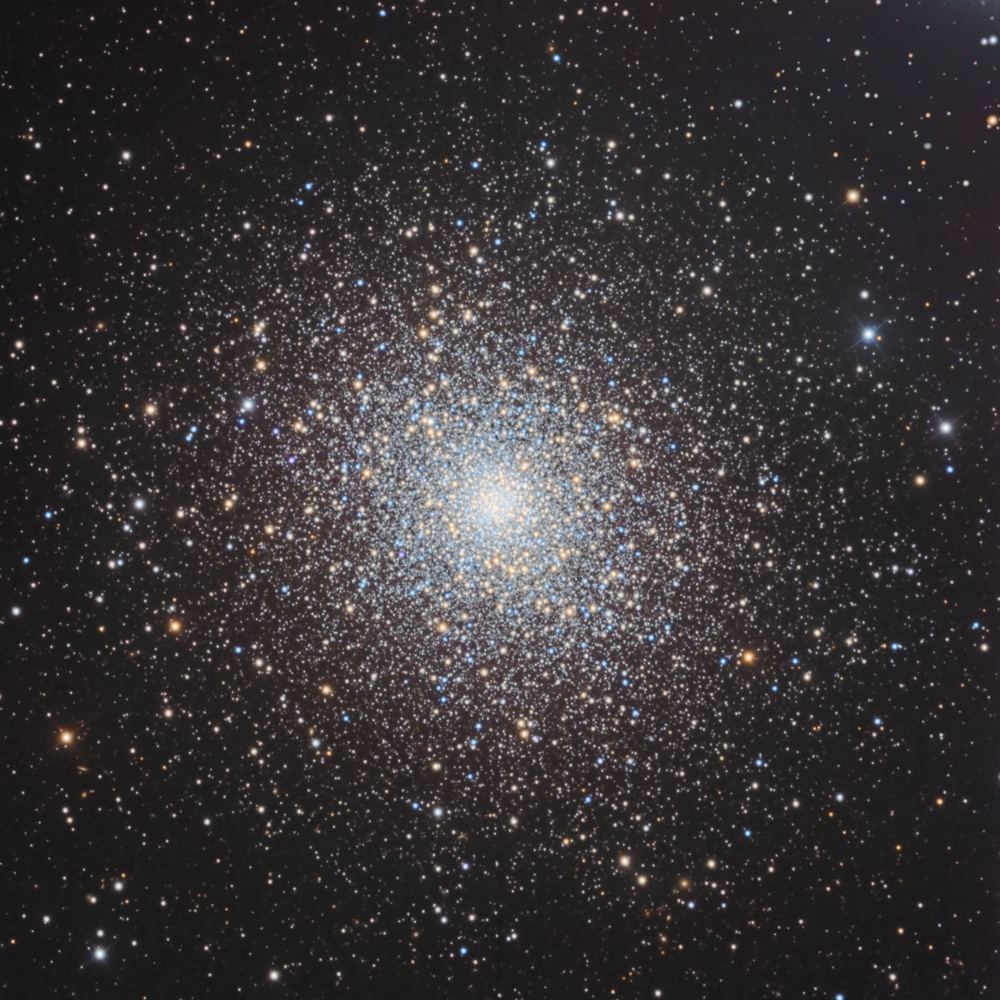

M5: A globular cluster is a group of ancient stars (M5 is thought to be more than 11 billion years old; by comparison, our sun is about
4.6 billion years old; our galaxy is about 13.5 billion years old, and the universe is thought to be 13.8 billion years old), gravitationally bound to each other, orbiting the core of its
associated galaxy.
The glow in the upper right of the image is a very bright star (much closer to us than the cluster), just off the frame.
M5 is about 25,000 light years from Earth, and is about one-quarter of the angular size of the full moon when viewed from very dark skies; it is roughly 80 light years across. It shines at
magnitude 5.6 (barely visible, in very dark skies, to the naked eye, but easily seen with binoculars). It has a mass equal to about 850,000 times that of our sun, and contains more than 100,000 stars
and perhaps as many as 500,000 stars (for comparison, there are estimated to be no more than 2,000 stars within 50 light years of earth, which is a slightly larger bubble).
Copyright 2022 Mark de Regt